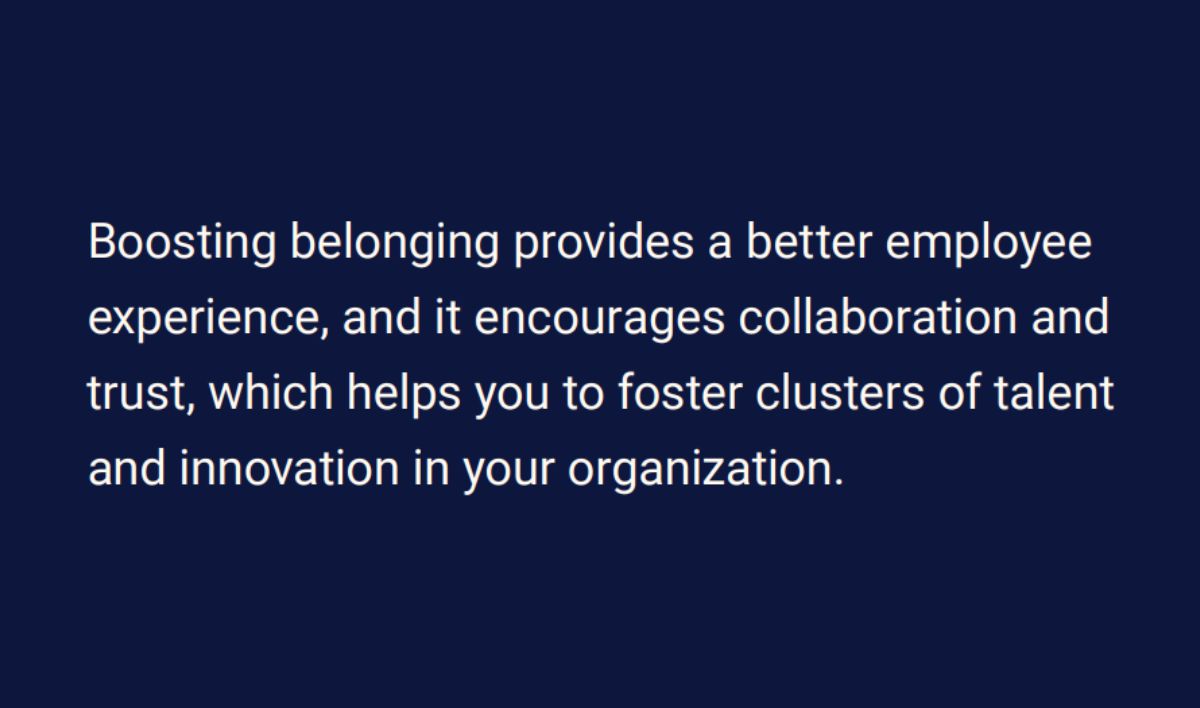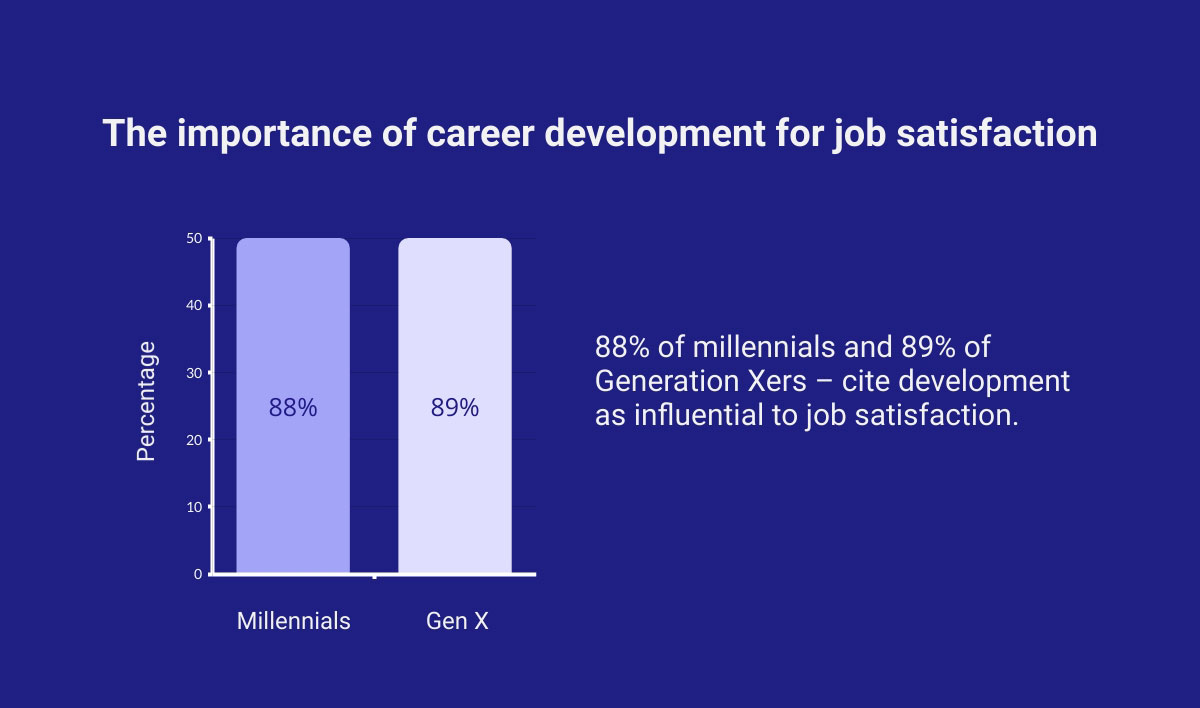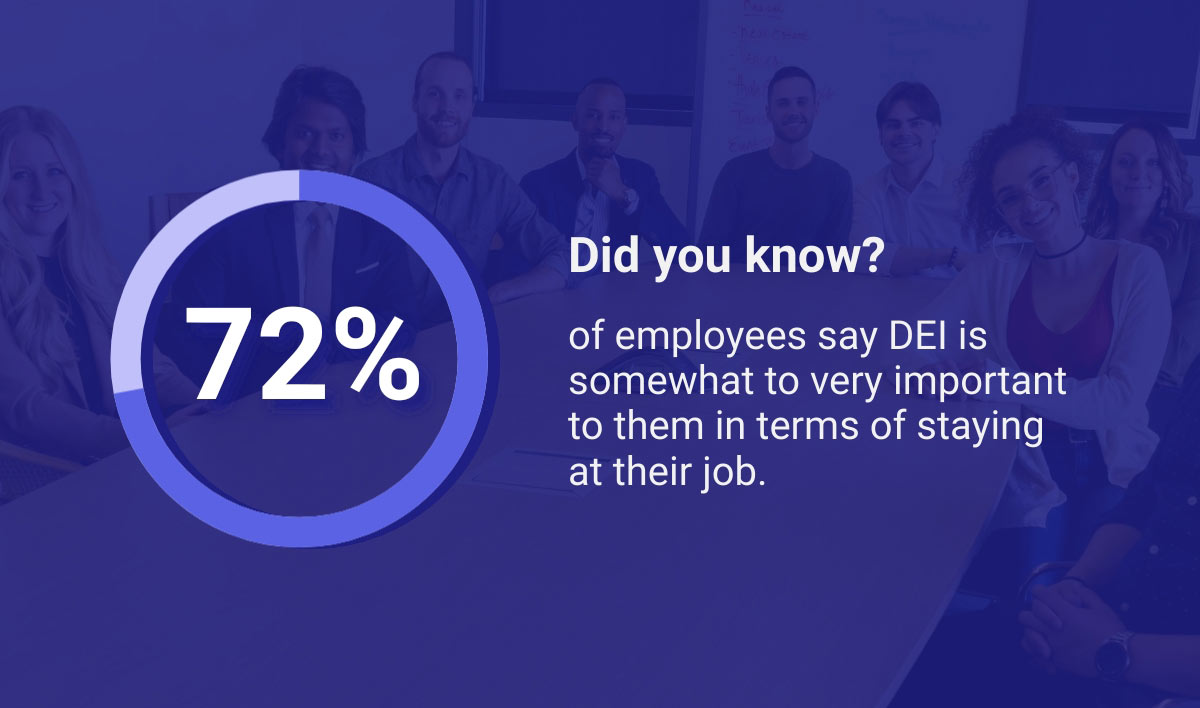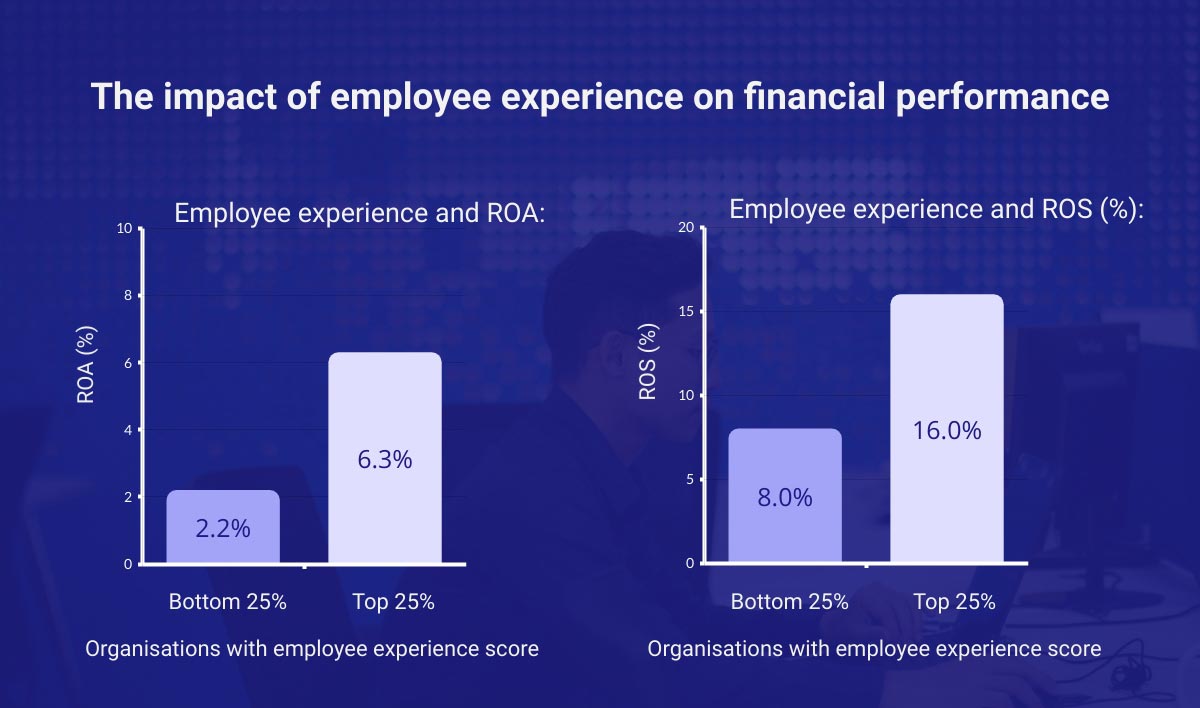Employee Experience: What Is it and Why Does It Matter?
Table of contents
- Defining employee experience
- What are the benefits of an exceptional employee experience?
- Common employee experience challenges
- What are the fundamentals of an employee experience strategy?
- How can organizations create a strong employee experience strategy?
- How does a positive employee experience impact the bottom line?
- Conclusion
The experience your employees have while interviewing, working, and departing your organization leaves a lasting impact that goes beyond the individual and directly affects your bottom line.
A poorly designed employee experience strategy can decrease retention, profits, and your reputation as an employer. The good news? Every organization has the power to create an exceptional employee experience strategy.
Read on to learn more about the impact of employee experience, common challenges, and how to build a successful strategy.
Defining employee experience
Based on data gathered from more than 23,000 employees in 45 countries, a new research study from IBM’s Smarter Workforce Institute and the Workhuman Analytics & Research Institute explores what it means to “work human.”
The resulting Index reveals which workplace components are critical to fostering a positive work experience and long-term success. To know more, download the report.
It goes on to note that employee experience is “a positive and powerful – and ultimately human – experience, in which employees can invest more of their whole selves into the workplace.”
More encompassing and holistic than engagement, strong employee experience looks at and leverages the components that foster positive company culture and long-term success.
It helps define the role every business leader and manager plays in creating a positive experience for employees. And it reveals how leaders can make their organization more relational – rather than simply transactional.
Perhaps most importantly, the report examines how employee recognition and continuous performance feedback have a significant and measurable impact on the employee experience.
What are the benefits of an exceptional employee experience?
The study identifies five dimensions of the Index. When employees have a positive experience in the workplace, they demonstrate a greater sense of:
- Belonging – feeling part of a team, group, or organization
- Purpose – understanding why one’s work matters
- Achievement – a sense of accomplishment in the work that is done
- Happiness – the pleasant feeling arising in and around work
- Vigor – the presence of energy, enthusiasm, and excitement at work
When these dimensions are thriving within an organization, the benefits are dramaticOpens in a new tab: better work performance (96% vs. 73%), significantly higher levels of discretionary effort (95% vs. 55%), and far greater levels of employee retention (21% vs. 44%).
And that’s not all. The benefits of a positive employee experience reveal themselves in many ways. For instance, in organizations where at least 80% of employees are made to feel their job is important, there was – according to data from GallupOpens in a new tab – a 64% drop in safety incidents.

Common employee experience challenges
Not having a defined strategy
Establishing a strategy is key to making and tracking progress. Organizations that operate without set goals and metrics will miss out on opportunities for improvement and overlook key aspects of the employee journey.
Inefficient communication and collaboration
If your tools and messaging don’t reach employees, your efforts will be fruitless. Ensure your messaging on benefits and career development is easily accessible and reiterated frequently to employees. Don’t leave candidates hanging without information on the next steps during the recruitment process.
Implementing the right tech tools
Employees can’t get their work done without the right technology. Don’t hinder collaboration and efficiency by restricting your tech budget. Find out what your employees want to use and invest in enough training and licenses. Adopt HR tech tools to make time off and other personal changes or requests seamless and private.
A lack of focus on remote employees
Allowing employees to work remotely gives your organization a competitive advantage, but it comes with its own challenges. As organizations adjust to having workers spread across the globe, it’s not uncommon for them to be forgotten or deprioritized when designing digital employee experiences.
Not understanding what employees need
Ask your employees what they want, and do what you can to make it happen. To gather feedback, use employee listening strategies and conduct employee experience surveys. For the instances when you’re unable to meet an employee's needs ensure that you are communicating your reasoning on why something might not be able to happen or work.
Not measuring all elements of the employee experience
Knowing what employees want is just one part of measuring the employee experience. Tracking metrics like retention, eNPS (Employee Net Promoter Score)Opens in a new tab, absenteeism, employee engagement, and recognition program usage can help paint a more accurate and complete picture of how active and collaborative employees are.
What are the fundamentals of an employee experience strategy?
Workhuman research has found employee experience is at its best when it is tailored to the individual.
Creating a human-focused workplace that listens to and understands the circumstances of employees' lives, rewards and recognizes employees for their work and contributions, and celebrates and acknowledges who they are as people is the heart of an ideal employee experience.
Download our exclusive report, The Evolution of Work: The Value of an Employee-First Culture, and uncover invaluable insights into what your employees need to cultivate a thriving workplace.
In practice, employers can zero in on these topics when developing an employee experience framework:
- Purpose and meaning
- Growth and development
- Wellbeing and work-life balance
- Recognition
- Open communication and feedback
Employee experience stages: A human-centric approach
The employee experience begins long before a candidate signs their offer letter and doesn’t end until they’ve handed over their badge on their last day. Being mindful of the entire life cycle is key to employee experience management.
Let’s look at each stage to uncover ways to humanize and improve your employee experience.
Attraction and recruitment
Are your job listings digestible and transparent? Are real employees connecting and following up with candidates as they progress through the process, or is all communication automated? Is it easy to understand from your website what your company’s mission, focus, and products or services are?
These are all touchpoints during the hiring process that shape the employee experience. Designing the attraction and recruitment phases with a seamless experience in mind will attract top talent.
Onboarding
New employees are eager to get started and make an impact at your organization. It’s on HR and the organization to give them the tools and knowledge to make that happen.
Training, orientation, and documentation help create a positive employee experience during onboarding. Your new hires don’t know what they don’t know – help them get up-to-speed by being transparent, communicative, and easy to reach.
On top of that, ensure your new hires feel welcome for who they are. Encourage teammates to write welcome messages highlighting why they’re excited to have them on the team. This is an easy way to ensure your onboarding remote employees experience is just as inviting as it is for those joining in person.
Development
From an employee perspective, what a company offers in terms of professional development opportunities has the longest-reaching impact on an employee's experience. To keep employees growing and engaged, utilize various employee development ideas, including training, shadowing, and mentoring opportunities that fit into each worker’s individual career path.
Aside from helping shape an employee’s future, offering development opportunities helps retain your best workers – a study has shown that 76% of employees are more likely to stay at their companyOpens in a new tab if it offers continuous learning.

Retention
A lot goes into retaining engaged employees, but retention often comes down to three core principles: ensuring your workers feel fairly seen, compensated, and supported. To understand whether you’re creating a human-centric employee experience to retain your best employees, answer these questions:
- Are your compensation packages keeping up with the cost of living?
- Does your company make it easy for employees to get work done when and where it suits their lifestyle best?
- Does your organization offer healthcare and paid time off benefits that encourage employees to care for themselves and their families?
- Can your workers point to tangible evidence that shows that the organization sees and recognizes their hard work?
Exit
A poor offboarding experience leaves a sour taste in an employee’s mouth that can damage your employer’s brand. Ex-employees may leave negative online reviews and discourage others from joining your organization. To create a strong exit experience, don’t leave it up to your employees to fill in the blanks.
Make sure you are clear on what needs to be done logistically to wrap up their tenure. This covers handing over assignments and equipment and updating them on information like when insurance coverage runs out and how to access their retirement or other benefit accounts after their departure.
But most importantly: listen to what they have to say about the employee experience. Set up time to have a candid conversation about ways your organization can improve and what you’re getting right. This is a time when you’re most likely to get the most honest feedback of an employee’s tenure and it provides a valuable learning opportunity for every employer.
How can organizations create a strong employee experience strategy?
Define the desired employee experience
Start with your company values. What’s important to your company culture? What contributes most to your employee engagement metrics? Aligning the employee experience with purpose, employer branding, and company culture will solidify their importance.
Define the desired employee experience and its components, ensuring leadership and employees understand and have what they need to work towards the common goal.
Employee journey mapping
As discussed above, assessing employees at different stages of their journey with the organization is key to employee experience management.
Prioritize employee experience in internal communications
Your employees are fielding plenty of messages so make sure that internal updates are doing more than just adding to the noise. Keep internal communications engaging, transparent, and brief. Prioritize employee needs and concerns. Send out periodic surveys to employees to find out what is helpful and what’s clogging their inbox.
Beyond ensuring your workers are kept in the loop, transparency boosts job satisfaction – employers who feel their company is transparent have 8.8 times higher job satisfactionOpens in a new tabthan those who do not.
Provide incentives
Salary, bonuses, extra time off, recognition programs. These are all incentives that can motivate and engage your employees. Align your incentives with employee values and motivations to foster a sense of appreciation and connection to the organization's success.
Data shows that incentives like formal recognition programs pay off. Employees participating in a recognition program are 1.5 times more likely to feel connected to the company, 1.3 times more likely to feel connected to their colleagues, and 1.4 times more likely to recommend their company to a friend.
Invest in DEI
Celebrating and acknowledging employees for who they are is key to a human-centric employee experience. Root your organization’s DEI principles into your employee experience framework by educating and celebrating the personal and cultural differences of employees and making it stress-free to access reasonable accommodations.

Measure the employee experience
Regularly measure employee engagement metrics and gather employee feedback to assess the effectiveness of your organization’s employee experience initiatives. Use these results to make data-driven decisions for improvement.
Go beyond the typical employee experience surveys and utilize an employee listening strategy that incorporates focus groups, town halls, check-ins, and pulse surveys.
How does a positive employee experience impact the bottom line?
“Employee experience is not just about feeling good at work,” according to The Financial Impact of a Positive Employee Experience, a follow-up report from The Employee Experience Index.
Findings from the study reveal organizations that deliver a positive employee experience through human workplace practices like recognition, empowerment, and feedback, see a significant impact on return on assets and return on sales.
The study found when organizations increase employee satisfaction through human workplace practices like recognition, employee feedback, and empowerment, they see a significant impact on business outcomes such as return on assets (ROA) and return on sales (ROS).
Among the study’s highlights:
- Organizations that score in the top 25% on employee experience report nearly 3x the return on assets (ROA) compared to organizations in the bottom quartile.
- Organizations that score in the top 25% on employee experience report 2x the return on sales (ROS) compared to organizations in the bottom quartile.
- Even a small increase in an organization’s employee experience index (EXI) score can make a huge impact on operating income. Results reveal that increasing EXI by a margin of 0.25 corresponds to a 0.86 percentage-point improvement in ROA and a 1.81 percentage-point improvement in ROS. For example, for a company with sales revenue of $600 million and a return on sales of 15%, increasing its EXI score by just 0.25 would lead to an increase in operating income of $11 million.

Conclusion
When done right, a positive employee experience supports employees for who they are, in and out of the office, and allows them to do their best work. It is to the entire organization’s benefit.
Start creating an employee experience strategy to boost customer satisfaction, business performance, and the engagement and morale of your employees.